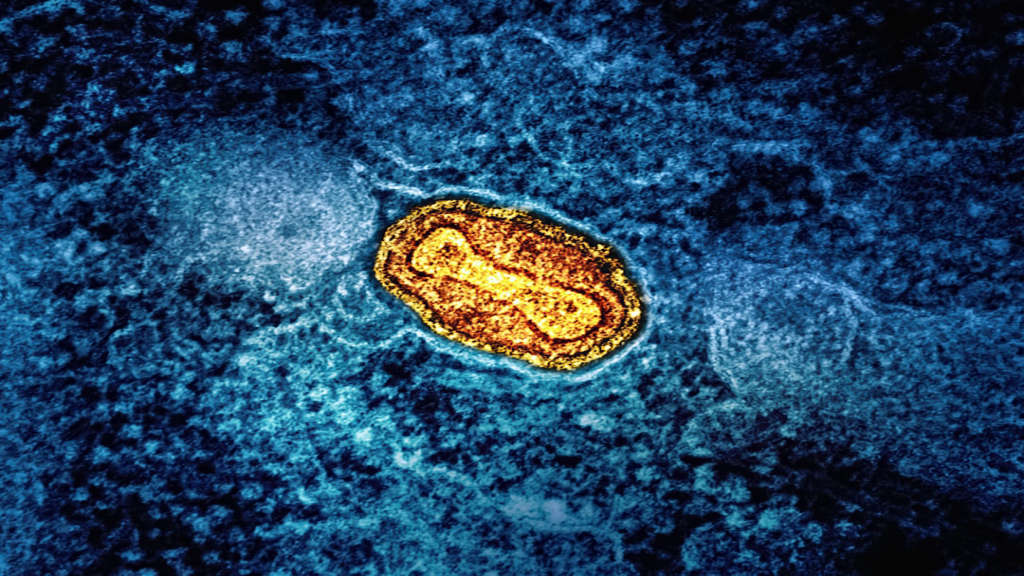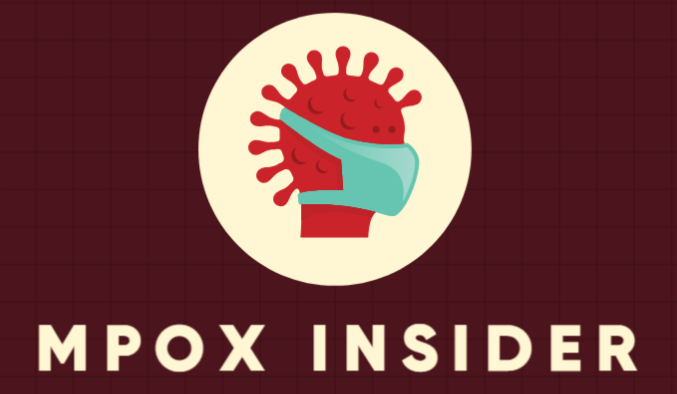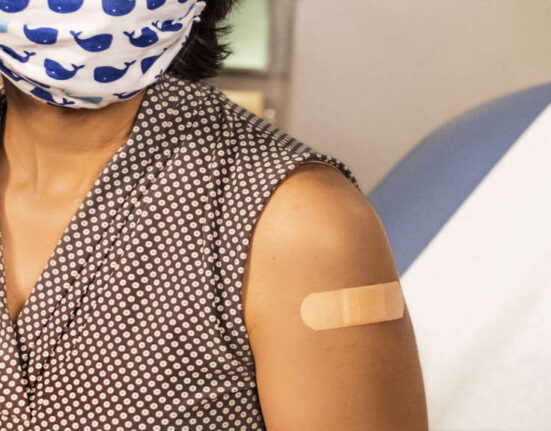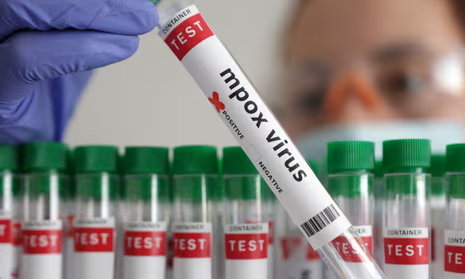In today’s fast-paced world, understanding emerging health issues is more important than ever. One such issue is the recent rise in discussions surrounding mpox. But what is this condition, and why should it matter to all of us? As global health systems face various challenges, mpox has captured attention due to its potential implications on public health. This blog aims to explore the essentials of mpox, including its symptoms, transmission, and treatment options. By addressing these components, we hope to demystify the issue and highlight the significance it holds as we navigate our health landscape.
Main Points
- Mpox refers to a contagious disease that has gained attention recently.
- Understanding the symptoms is crucial for early detection and treatment.
- Transmission routes reveal important ways to minimize spread.
- Vaccination and preventive measures can help control outbreaks.

Understanding Mpox: An Overview of Its Origins and Evolution
Mpox, previously known as monkeypox, is an infectious disease that has gained attention in recent years. Its origins trace back to the late 20th century, primarily linked to rodents in Central and West Africa. However, the disease has since evolved in various ways, prompting public health experts to delve deeper into its complexities.
What is Mpox Disease?
At its core, mpox disease is caused by the mpox virus, a member of the Orthopoxvirus genus. It shares similarities with smallpox, though it tends to produce milder symptoms. The disease was first identified in laboratory monkeys in 1958, which is reflected in its initial name. Yet, the real zoonotic reservoirs seem to be squirrels, rats, and other rodents. Over the years, mpox has emerged sporadically in human populations, primarily in African countries, but its transmission dynamics have started to change.
What are Mpox Symptoms?
The symptoms of mpox can often lead to confusion, mainly due to their resemblance to other viral infections. Typically, an individual infected with the virus may experience:
- Fever: This often precedes other symptoms and can be quite pronounced.
- Rash: A distinctive rash usually appears after fever. It can evolve from macules to vesicles and eventually crust over.
- Swollen lymph nodes: Unlike many other viral illnesses, mpox often causes lymphadenopathy, which can aid in distinguishing it from conditions like chickenpox.
Although these symptoms often resemble those of smallpox, the presence of swollen lymph nodes is quite characteristic of mpox. Thus, although the initial signs may prompt a sense of urgency, understanding the unique features of mpox is crucial for accurate diagnosis.
What is Mpox Treatment?
Treatment for mpox remains a subject of ongoing research, given that no specific antiviral therapy exists. Generally, healthcare professionals recommend symptomatic care, which may include:
- Hydration: Ensuring adequate fluid intake is essential during the illness.
- Pain management: Over-the-counter pain relievers can help alleviate discomfort caused by fever or body aches.
- Isolation: Infected individuals are advised to stay isolated to prevent further transmission. This measure is particularly important as mpox can spread through close contact.
The emphasis on symptomatic care, along with vigilant monitoring, is vital, especially in regions where the disease may re-emerge sporadically. It’s also worth noting that there have been discussions about the potential development of vaccines, given the similarities between mpox and smallpox.
In summary, understanding mpox involves not only recognizing its historical context and transmission methods but also being aware of its symptoms and treatment options. The evolving nature of this disease reminds us of the importance of continual research and public health vigilance. With increasing global connectivity, being informed about such diseases is not merely academic; it can make a tangible difference in community health.

The Health Implications of Mpox: Why Public Awareness is Crucial
In recent times, the emergence of mpox has become a significant public health concern, garnering attention from both health authorities and media outlets. Yet, despite the extensive coverage, many people remain unclear about its transmission, prevention, and potential implications for public health. This lack of understanding can exacerbate the spread of information, leading to further confusion. Thus, understanding mpox is essential for effective public communication and health strategies.
What is Mpox Transmission?
Mpox, previously known as monkeypox, is primarily transmitted from person to person through direct contact with bodily fluids, lesions, or respiratory droplets. The dynamics of mpox transmission can be puzzling. While it’s often likened to smallpox, some aspects of its spread are unique. For example, the virus can linger on surfaces, making it possible for individuals to contract the virus from contaminated objects. This factor raises important questions: How long can the virus survive outside a host? Are there surfaces more likely than others to harbor it? These uncertainties highlight the complexities of transmission.
What is Mpox Prevention?
Preventive measures for mpox primarily focus on reducing direct contact with infected individuals and practicing good hygiene. Vaccination plays a key role as well; it can provide significant protection against the virus. Moreover, the concept of mpox prevention is not solely about individual action. Communities need to work together, sharing information and resources to implement effective strategies. For instance, education campaigns can help dispel myths surrounding the virus, encouraging behaviors that keep populations safer. It’s crucial that public health agencies tailor their messages to address specific community concerns to promote this collective responsibility.
What is Mpox Outbreak?
The term “mpox outbreak” often sparks concern among the public. An *outbreak* refers to an unexpected increase in cases within a specific population or region. These incidents are typically identified through monitoring and reporting systems established by health organizations. The complexities surrounding an mpox outbreak mean that rapid response is necessary, but can often lead to increased anxiety among the public. Questions arise: Are these cases linked? What steps are being taken to contain the situation? How reliable is the information being disseminated? These factors can create a whirlwind of anxiety that needs addressing through transparent communication.
Conclusion: The Role of Public Awareness
In conclusion, public awareness surrounding mpox is paramount. By grasping the intricacies of transmission, prevention, and the potential for outbreaks, individuals can protect themselves and their communities. It’s imperative to foster an environment of open dialogue, where concerns can be addressed without stigma. Only through collective understanding and action can we effectively face health challenges like mpox. Indeed, this is not just a matter of personal health, but community well-being as a whole.
| Key Aspects of Mpox | Details |
|---|---|
| Transmission | Direct contact with infected individuals or contaminated surfaces. |
| Prevention | Vaccination, good hygiene practices, education campaigns. |
| Outbreak | Unexpected increase in cases requiring prompt action. |
Ultimately, it’s about striking the right balance between awareness and action. We must navigate this challenge together, ensuring that we remain well-informed and proactive in our approach to public health.

Common Symptoms of Mpox: Recognizing the Signs Early
Mpox, previously known as monkeypox, has gained attention in recent years due to its transmission and symptoms. Understanding the common symptoms associated with this viral infection is crucial for early recognition and appropriate action. So, what should you be on the lookout for?
Initial Symptoms: Fever and Fatigue
Initially, many individuals experience a sudden onset of fever, chills, and fatigue. These symptoms might seem typical of other viral infections, leading people to brush them off as just a regular illness. However, if these symptoms are accompanied by swelling of the lymph nodes and a general feeling of malaise, it could be an early sign of mpox.
Skin Rash: A Defining Feature
Perhaps the most distinctive symptom of mpox is the skin rash. This rash usually appears one to three days after the onset of fever and often progresses through various stages. At first, you might see flat lesions that evolve into raised bumps, and ultimately, these turn into fluid-filled blisters. Crucially, the appearance of this rash can easily be mistaken for other conditions, making accurate recognition even more important. If you notice such symptoms, don’t hesitate to reach out to a healthcare professional.
Respiratory Symptoms: A Rare but Possible Indicator
Interestingly, respiratory symptoms such as a sore throat or cough can occur, although they are not the most common indicators of mpox. Still, if you find yourself experiencing these alongside other symptoms, it could signal a need for further evaluation. Additionally, while respiratory symptoms are less prevalent, they highlight how diverse the manifestations of mpox can be, contributing to confusion around its diagnosis.
Additional Symptoms to Monitor
Besides the symptoms mentioned, some people may experience headaches, muscle aches, or back pain. These generalized symptoms might lead to uncertainty. That said, they often accompany the more characteristic signs of mpox. Thus, keeping track of your health and any changes is key. While it’s easy to link these to stress or another unrelated illness, being aware of the symptoms specific to mpox is vital.
What Should You Do?
Ultimately, if you suspect that you are experiencing signs of mpox, consulting a healthcare provider is essential. They can guide you on the next steps, including possible testing and vaccination. Speaking of which, the mpox vaccine has become an important tool in the fight against the spread of this illness. Getting vaccinated can help protect yourself and those around you.
In conclusion, recognizing the common symptoms of mpox is fundamental to preventing further transmission. Early identification and action can make a significant difference. Thus, remain vigilant and informed about your health.
The Transmission Pathways of Mpox: How the Virus Spreads
Mpox, commonly referred to as monkeypox, is a viral infection that has garnered significant attention in recent times. Understanding how this virus spreads is essential for controlling outbreaks and protecting public health. The transmission pathways of mpox can be somewhat intricate, often leading to confusion among the public.
Primary Transmission Routes
Mpox can be transmitted through a variety of routes. Let’s break these down:
- Direct Contact: The primary route of mpox transmission is through direct physical contact with an infected person. This can occur through:
- Skin-to-skin contact, particularly during intimate activities.
- Contact with bodily fluids, such as saliva, which might seem less likely but can happen.
- Contaminated Objects: The virus can also linger on surfaces, but how long it stays infectious is still up for debate. It’s essential to remain vigilant about hygiene practices, especially in communal areas.
- Airborne Transmission: Though less common, there remains a possibility of airborne transmission. In crowded spaces where an infected person has been, smaller virus particles may be present in the air. This has raised questions about the role of aerosols in spreading the virus.
Factors Influencing Transmission
Understanding the factors that contribute to the virus’s spread can also be complex. Several aspects can influence these transmission routes:
- Viral Load: Infected individuals with a higher viral load may be more likely to transmit the virus. This means that during certain stages of infection, an individual could pose a greater risk to others.
- Immunity: The host’s immune response plays a significant role. Someone with a previous exposure to similar viruses may have a heightened defense mechanism, which can reduce the risk of transmission.
- Behavioral Factors: High-risk behaviors, such as unprotected intimate contact, can facilitate the spread of mpox. Being aware of these behaviors is crucial for prevention.
Preventative Measures
Now, let’s discuss how one can effectively reduce the likelihood of transmission:
- Practice adequate hygiene—frequent handwashing with soap and water can significantly lower the risk.
- Avoid close contact with individuals exhibiting symptoms of mpox.
- Stay informed and educated about the virus. Knowledge empowers individuals to take proactive steps.
In summary, the transmission pathways of mpox are multifaceted. Direct contact, contaminated objects, and potential aerosol transmission are vital aspects that require attention. Understanding these pathways can guide us toward effective preventive strategies. Although the nuances of how mpox spreads may seem overwhelming, staying informed remains our strongest defense. Public awareness is key, so let’s prioritize education and vigilance as we navigate this complicated landscape.
Preventative Measures Against Mpox: Safeguarding Communities
The global landscape of infectious diseases has significantly evolved, prompting communities to adapt in various ways. Mpox, a viral infection that has recently gained attention, requires a comprehensive approach to prevention. By understanding its transmission and implementing effective measures, communities can safeguard themselves and mitigate the risks associated with this disease.
Understanding Transmission
Firstly, it’s crucial to comprehend how Mpox spreads. The virus primarily transmits through direct contact with infected bodily fluids or lesions. This transmission method may lead to confusion, as it can mimic other viral infections. Therefore, awareness is key. Engaging in open dialogues about the means of transmission allows individuals to be more cautious and informed.
Community Health Education
Accessible community health education plays an integral role in prevention. Workshops and seminars can disseminate vital information about Mpox symptoms, prevention strategies, and treatment options. The more individuals know, the less likely they are to spread misinformation, which can lead to stigma and fear. This is especially important in communities where the virus might create panic or unnecessary worry.
Promoting Vaccination
Vaccination serves as a frontline defense against the disease. Ensuring that individuals have access to vaccines can significantly reduce infection rates. Health authorities must prioritize vaccination campaigns, particularly in areas with high transmission potential. Additionally, communities should encourage participation in these programs, as collective action can lead to more significant results.
Encouraging Safe Practices
Incorporating safe practices into daily life also proves effective. For instance, reducing skin-to-skin contact in crowded places may lower the risk of transmission. This approach might seem simple, yet it can profoundly impact the spread of the virus. Moreover, promoting hygiene practices such as regular handwashing and the use of hand sanitizers will reinforce a culture of cleanliness, thereby enhancing community resilience.
Collaboration with Local Health Authorities
Furthermore, collaboration with local health authorities is vital for a coordinated response to the virus. Communities should foster partnerships that promote information sharing and resource allocation. Neighbors, schools, and local organizations must unite and create a safety net during outbreaks. This cooperation cultivates trust and assures individuals that their wellbeing is a community priority.
Addressing Mental Health
Amidst these preventative measures, one must not overlook the importance of mental health. The anxiety surrounding Mpox can be overwhelming. Communities should provide mental health resources to support individuals feeling stressed or fearful about the virus. Compassionate outreach can ease worries, allowing people to focus on prevention rather than panic.
Conclusion
In conclusion, safeguarding communities against Mpox requires a multifaceted approach. By understanding the virus, promoting health education, advocating for vaccination, encouraging safe practices, collaborating with local health authorities, and addressing mental health, individuals can contribute to a more resilient society. Each measure is essential in creating a robust defense against the uncertainties posed by infectious diseases like Mpox.
Mpox vs. Other Infectious Diseases: Key Differences Explained
As global health continues to evolve, new challenges emerge alongside existing ones. One of the infectious diseases that has recently attracted attention is Mpox, previously known as monkeypox. In many ways, it stands apart from other infectious diseases, both in its transmission modes and clinical manifestations. To navigate these differences, it’s essential to delve into how Mpox compares with other diseases like smallpox, chickenpox, and even the common flu.
Transmission Modes
The way diseases spread can drastically influence outbreak management and prevention strategies. In the case of Mpox, its transmission typically occurs through direct contact with skin lesions or respiratory secretions of an infected person. This is quite different from airborne diseases like flu, which spread through droplets when an infected person coughs or sneezes. To illustrate this point, here’s a comparison table:
| Disease | Transmission |
|---|---|
| Mpox | Direct contact or respiratory |
| Flu | Airborne droplets |
| Smallpox | Airborne and direct contact |
Clinical Presentation
Another area where Mpox diverges is in its clinical presentation. While the flu may cause general fatigue and fever, and chickenpox creates a distinctive rash, Mpox features its own unique set of symptoms. Patients often experience fever, headache, and swollen lymph nodes, followed by a characteristic rash that develops into pustules. This specific evolution of the rash is a strong indicator of Mpox, allowing healthcare providers to make more informed diagnoses.
“The symptoms of Mpox can sometimes resemble those of smallpox, particularly in the rash stage. However, the presence of lymphadenopathy in Mpox can be a distinguishing factor.”
Preventive Measures
Preventive strategies are crucial in combating all infectious diseases. For Mpox, public health measures focus on isolating infected individuals and promoting hygiene practices more actively than for the flu, where vaccines play a critical role. The flu vaccine adjusts annually to meet circulating strains, while no such vaccine currently exists for Mpox. This difference emphasizes the importance of awareness and quick action in Mpox cases.
In conclusion, while Mpox shares characteristics with other infectious diseases, understanding its unique transmission routes, clinical presentations, and preventive measures is vital. The distinctions can sometimes be blurred, leading to confusion among the public and even healthcare professionals. Nonetheless, recognizing these differences enables us to protect ourselves better and respond more effectively to this intriguing disease.
The Role of Vaccination in Combating Mpox: Current Strategies and Developments
In recent years, the emergence of Mpox has raised significant public health concern. While it may not garner as much attention as other viral outbreaks, Mpox, caused by the monkeypox virus, poses a real threat, particularly in regions where it was previously endemic. Vaccination has emerged as a crucial tool in combating this infection. Let’s explore the current strategies and developments surrounding vaccination efforts against Mpox.
Understanding Vaccination’s Importance
Vaccination plays a vital role in managing outbreaks of viral diseases. It helps to create herd immunity, thereby reducing the overall spread of the virus within communities. Moreover, it can prevent severe illness and mortality among vulnerable populations. The journey to combat Mpox through vaccination isn’t straightforward, yet it is essential.
Current Vaccination Strategies
As health officials navigate the complexities of Mpox, several strategies regarding vaccination have come to the forefront. The following elements are crucial:
- Identification of At-Risk Populations: Targeting groups with higher exposure risks, such as healthcare workers and individuals in endemic regions, ensures that efforts are concentrated where they are most needed.
- Development of Effective Vaccines: Laboratories worldwide are working tirelessly to develop vaccines with efficacy against Mpox. The effectiveness of a vaccine can significantly influence its uptake.
- Community Outreach and Education: Informing the public about the importance of vaccination is critical. Regular campaigns can alleviate hesitancy and misunderstandings surrounding the vaccine.
Recent Developments and Challenges
As research progresses, several developments have surfaced in relation to Mpox vaccination. For instance, some researchers are investigating the use of previously developed vaccines for other poxviruses, such as the smallpox vaccine. However, the transition from theory to practice is fraught with challenges. New variants of the virus may emerge, which could complicate vaccine effectiveness and necessitate continuous updates to the vaccination strategy.
Moreover, misinformation often emerges during health crises, creating confusion and skepticism about vaccination. Striking the right balance between addressing public concerns and communicating scientific data is essential. Health officials must ensure that the message about the benefits of vaccination is clear and resonates with the community.
Looking Ahead
As we progress, it’s vital to remain vigilant. Future strategies will likely need to incorporate real-time data collection and responsiveness to emerging trends regarding Mpox outbreaks. * Furthermore, international collaboration will be imperative in sharing knowledge and resources swiftly to counter potential outbreaks globally.
In conclusion, the role of vaccination in combating Mpox cannot be overstated. While the path forward may present challenges and uncertainties, the collective efforts of the scientific community, health officials, and the public can shape a more robust response to this emerging threat. Engaging discussions and informed decisions will ultimately determine the success of our vaccination strategies against Mpox.
Mpox Research and Future Directions: What Scientists are Discovering
In recent years, mpox has emerged as a significant concern in the field of public health. Not only does it raise questions about our readiness to respond to viral outbreaks, but it also invites a deep dive into what the future may hold for prevention and treatment. Scientists worldwide are actively engaged in research, and their findings are continually shaping our understanding of this elusive virus.
Current Understanding of Mpox
Mpox, formerly known as monkeypox, is a viral disease that can present various symptoms. The transmission routes, potential reservoirs, and even the mutation patterns of the virus are still under extensive study. Current research indicates that transmission can occur from animals to humans and between humans, but the specific ecological dynamics remain unclear. This uncertainty can lead to confusion, as knowledge gaps often fuel speculation. Why is the virus more prevalent in certain regions? How do social behaviors influence its spread? These questions linger, adding layers to our understanding of mpox.
Recent Advances in Research
Recent studies have unveiled interesting discoveries. For instance, scientists have identified potential animal reservoirs that could play a critical role in the virus’s persistence in human populations. However, despite these advances, the complexity of mpox’s transmission dynamics leaves many in the field scratching their heads. What’s next? How do the variants behave, especially with changing environmental factors? These uncertainties emphasize the need for continued exploration.
Future Directions in Mpox Research
As we look ahead, the emphasis on developing robust preventive measures becomes apparent. Vaccination strategies are at the forefront, and while some vaccines show promise, scientists grapple with questions of efficacy and widespread accessibility. The idea that a single vaccine can combat diverse strains of the virus feels both hopeful and daunting.
Moreover, understanding the sociocultural factors influencing mpox transmission is crucial. This isn’t just a biomedical issue; societal behaviors play a vital role in how diseases proliferate. Education and public awareness can be game-changers in controlling outbreaks, but how do we ensure the message gets through without inciting fear? The balance is delicate.
Challenges Ahead
Despite the optimism surrounding new research, challenges abound. The global landscape of infectious diseases is ever-evolving, and mpox is just one piece of the puzzle. Collaboration between countries, funding for research, and a commitment to public health are imperative for tackling mpox effectively. However, this also raises the question: do we have the collective will and resources to address this challenge comprehensively?
| Research Focus | Current Findings | Future Implications |
|---|---|---|
| Transmission Dynamics | Animal-to-human and human-to-human transmission; complexity remains. | Need more comprehensive models to predict outbreaks. |
| Vaccination Strategies | Existing vaccines show promise but face accessibility issues. | Potential to improve containment with new vaccines. |
| Societal Impact | Cultural and social factors influence transmission. | Education key for prevention, but difficult to implement. |
In conclusion, as we continue to unravel the mysteries of mpox, a multifaceted approach combining scientific inquiry and societal engagement will be essential. Future research should not only focus on the virus itself but also consider the context in which it exists. Perhaps the greatest challenge lies not just in understanding mpox, but in how we, as a global community, choose to respond.
Addressing Myths and Misconceptions About Mpox: Setting the Record Straight
Mpox, previously known as monkeypox, has garnered significant attention recently. This attention has led to a myriad of myths and misunderstandings surrounding the disease. Although awareness is essential, it’s vital that we separate fact from fiction to increase understanding and prevent unnecessary panic.
Understanding the Basics
First and foremost, let’s tackle the basic question: What is mpox? Mpox is a viral infection that occurs in some parts of Africa but has gained visibility in other areas due to recent outbreaks. While its association with primates gives a misleading impression of its primary transmission modes, it’s essential to note that this virus can spread between humans as well. For instance, close contact with an infected person or sharing contaminated materials can facilitate transmission. Therefore, it’s not only a disease of wildlife; it increasingly affects humans.
Myth 1: Mpox Only Affects Certain Groups
One prevalent misconception is that mpox solely affects specific groups. Some might think it’s limited to particular demographics, like men who have sex with men. This perception is inaccurate and can lead to stigma. Mpox can affect anyone, regardless of sexual orientation, background, or lifestyle. It’s crucial to understand that diseases do not discriminate. Efforts should focus on educating the public about the transmission routes rather than placing blame on certain individuals or communities.
Myth 2: Mpox is Just Like Chickenpox
Another confounding belief is that mpox is merely a more severe form of chickenpox. While both diseases can cause rashes and fever, the viruses are distinctly different. Chickenpox, caused by the varicella-zoster virus, is typically more benign with vaccines available. Mpox, however, may lead to more serious complications, especially in immunocompromised individuals. Recognizing these differences is key to responding appropriately when faced with a surge in cases.
Myth 3: Vaccination isn’t Necessary
Many individuals also harp on the idea that vaccination against mpox is unnecessary. This belief stems from a lack of comprehensive understanding of how vaccines function. Vaccination can provide protection and significantly reduce the spread of the virus. With emerging cases, it’s reasonable to assert that preventative measures, including vaccination, should not be disregarded. Ignoring this option could exacerbate the outbreak and hinder our collective effort to control it.
Final Thoughts
As we continue to navigate through these uncertainties, being informed plays a vital role in our response to mpox. Fact-based knowledge can reduce panic and help create a more empathetic community. Let’s dispel misinformation together and pave the way for understanding and respect for those affected. Remember, education is our greatest ally in combatting not just mpox, but any health crisis that may arise.
In conclusion, while mpox may seem confusing at first glance, addressing these myths directly can help us all feel a little more at ease. Each of us carries a responsibility to stay informed and support our communities through accurate information. So, let’s arm ourselves with knowledge rather than fear.
Conclusion: The Importance of Staying Informed About Mpox for Public Health
As we navigate the complexities of modern health issues, one term that has recently gained prominence is Mpox. This monkeypox outbreak presents a multifaceted challenge, one that highlights the necessity of being well-informed. In an age where information is at our fingertips, why is it so vital to keep abreast of developments regarding Mpox? To answer this, we must first consider the broader implications on public health.
Understanding the Risks
Awareness of Mpox is crucial because the disease can have serious health implications. Let’s break down the main points:
- Transmission: Mpox can be transmitted from animals to humans and from person to person. This means anyone, regardless of their background, could potentially be at risk.
- Symptoms: The early signs can be easily mistaken for other illnesses. Confusion about symptoms can lead to delayed treatment and further spreading of the virus.
- Prevention: Staying informed allows individuals and communities to take appropriate precautions, successfully limiting the spread of the disease.
Community Impact
The ramifications of not staying informed extend beyond individual health. They can significantly affect community resilience. A population that is unaware of Mpox may be ill-equipped to deal with the outbreak. For example:
| Issue | Consequence |
|---|---|
| Lack of Awareness | Increased Spread |
| Misinformation | Fear and Panic |
| Delayed Response | Greater Health Risks |
Moreover, when people are not fully aware of Mpox, they might rely on rumors or anecdotal information. This can create a murky understanding of the virus and its effects. And it’s not just the health side of things; misinformation can lead to unnecessary fears, stigma, and even discrimination against certain groups, which further complicates the response efforts.
The Path Forward
So, how can we ensure we stay informed? Here are some actionable steps:
- Follow credible health organizations for updates; they provide accurate information.
- Engage with community health programs; they offer workshops and resources to educate the public.
- Participate in discussions; talking openly about health issues can dispel myths and fears.
In conclusion, understanding Mpox is not merely an individual concern; it is a collective responsibility. Staying informed is a fundamental part of safeguarding not just our health, but also the health of our communities. By prioritizing awareness, we can enhance our public health strategies and contribute to a more informed society. Ultimately, being proactive about our health knowledge can help pivot the narrative from fear to empowerment.
Informed citizens are the backbone of a resilient community, and together, we can combat the challenges posed by Mpox and similar health threats. Let’s take action and ensure that we stay informed.
Related content:
Unlocking Solutions: The Latest Advances in Mpox Treatment
Tracing the Footsteps of Mpox: A Journey Through Its Historical Landscape
You Can Also Review These:







